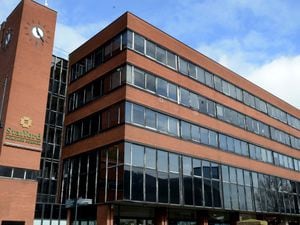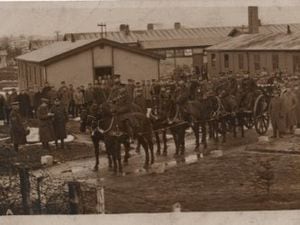More than 20,000 vulnerable patients not told to shield till two months after first lockdown
More than 20,000 vulnerable patients in the Black Country and Staffordshire were not told to shield until months after lockdown began last year, figures reveal.

A group of MPs said the Government's lack of planning created a postcode lottery with areas across England reporting unacceptable variations in the number of people shielding.
The Government originally asked those considered to be the most vulnerable to Covid-19 to isolate at home in March last year.
NHS Digital figures show 3,075 patients in Stafford were on the shielding list by April 12 last year – the earliest data available. But local doctors were then asked to review the data, caused the patient count to soar to 6,925 by May 15 – an increase of 125 per cent.
It increased by 59 per cent in Sandwell – from 7,540 by April 12, to 12,000 by May 15. An increase of 58 per cent was seen in Dudley after local doctors reviewed the data – from 7,855 to 12,420 shielding patients.
Cannock Chase saw an increase of 51 per cent – with the number of people required to shield increasing from 2,420 to 3,660.
The figures show that in South Staffordshire, 2,510 patients were on the shielding list by April 12 last year – but this increased by 46 per cent to 3,660 by May 15.
It increased by 43 per cent in Walsall – from 7,130 in April, to 10,225 by May 15 last year. And in Wolverhampton, 6,275 patients were told to shield in April 2020, but this increased by 34 per cent by May 15 – to 8,400 patients.
Across England, reviews led shielding numbers to increase by 73 per cent – but this varied hugely regionally, from just 15 per cent in Carlisle to 352 per cent in the London borough of Hounslow.
The Commons Public Accounts Committee said the "unacceptable" level of variation was evidence of a postcode lottery, as the list grew from 1.3 million to 2.2 million nationally.
Committee chairwoman Meg Hillier said this was caused by "poor data" and a lack of "joined-up policy systems".
She said: “The shielding response in the Covid pandemic has particularly exposed the high human cost of the lack of planning for shielding in pandemic-planning scenarios.
“People were instructed to isolate, to protect themselves and others – but the cost of this protection was reduced access to living essentials like food, and an untold toll on mental health and wellbeing.”
MPs also found that a contact centre established to trace those who did not respond to an initial shielding letter was unable to reach 800,000 people – and it is still not known whether they had been contacted by local authorities.
Clinically extremely vulnerable patients in England have not needed to isolate since April 1 this year, by which point more than 90 per cent had received at least one vaccine dose.
The national shielding list increased significantly again in February this year – when scientists developed a new tool to assess whether someone is at risk of severe disease or death.
Comprehensive
The latest update shows the number on the shielding list had risen to 26,545 in Sandwell; 20,165 in Walsall; 20,150 in Wolverhampton; 20,130 in Dudley; 8,975 in Stafford; 5,840 in Cannock Chase; and 6,130 in South Staffordshire; all as of April 14 this year.
The British Medical Association said inadequate planning and unclear Government communication made shielding a distressing experience, and jeopardised the public's health and wellbeing.
BMA council chair Dr Chaand Nagpaul added: “The shielding lists could have been created more quickly and effectively rather than shifting criteria and suddenly increasing the number of people on the list.
"This led to a huge rise in workload having to contact large numbers of people within a short time frame without comprehensive guidance."
Karen Wright, director of public health for Dudley, said: “The period in question was at the very start of the pandemic, when we were dealing with a new situation which was changing by the day and sometimes by the hour.
“It is highly likely that the overwhelming majority of the extra names that were added to the shielding list had already taken the decision to shield at home themselves before receiving their letters, aware of their own health conditions and following government guidance to protect the NHS and save lives.
“I would like to thank all our residents who continue to follow the Covid-19 guidance and are playing their part to keep themselves, their families and the community safe.”
The Government said it delivered an urgent national scheme to contact people and provide them with vital food and medicine so they could shield – but many chose not to take up the offer.
A spokesperson added: “These report findings are disappointing and misjudged.
“We have learned more about the virus and adapted our approach, which has enabled us to protect those most vulnerable by providing them with shielding guidance and prioritising them for vaccination.”





